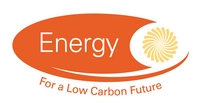Projects
Projects: Projects for Investigator |
||
| Reference Number | NE/L008130/1 | |
| Title | New industry consortia with novel laboratory facilities that forms a UK national centre of excellence in submarine geohazards research | |
| Status | Completed | |
| Energy Categories | Fossil Fuels: Oil Gas and Coal(Oil and Gas, Other oil and gas) 30%; Not Energy Related 70%; |
|
| Research Types | Basic and strategic applied research 100% | |
| Science and Technology Fields | ENVIRONMENTAL SCIENCES (Earth Systems and Environmental Sciences) 100% | |
| UKERC Cross Cutting Characterisation | Not Cross-cutting 75%; Sociological economical and environmental impact of energy (Environmental dimensions) 25%; |
|
| Principal Investigator |
Dr MJ Cartigny No email address given Science and Technology United Utilities PLC |
|
| Award Type | Standard | |
| Funding Source | NERC | |
| Start Date | 01 January 2014 | |
| End Date | 30 June 2014 | |
| Duration | 5 months | |
| Total Grant Value | £79,217 | |
| Industrial Sectors | ||
| Region | North West | |
| Programme | ||
| Investigators | Principal Investigator | Dr MJ Cartigny , Science and Technology, United Utilities PLC (99.997%) |
| Other Investigator | Dr AI (Angus ) Best , National Oceanographic Centre, NERC (0.001%) Dr E Sumner , School of Ocean and Earth Science, University of Southampton (0.001%) Dr P Talling , Science and Technology, United Utilities PLC (0.001%) |
|
| Web Site | ||
| Objectives | ||
| Abstract | We propose to use these 'pump priming' funds to initiate an ambitious new industry consortium and UK centre of excellence for research into marine geohazards. Funding is sought specifically to: 1) set up an experimental laboratory with a set of novel sensors for imaging dense sediment flows, and 2) develop initial links with key industry stakeholders (e.g. FUGRO GeoConsulting Ltd).NOC has a strong submarine geohazards group whose work is based mainly on field observations; for instance it is leading a £2.3M NERC Consortium of tsunami-landslide hazards. It has just been awarded a £850k NERC grant to monitor active submarine flows in Monterey Canyon offshore California. Here we seek funding to develop a new experimental laboratory to test hypotheses posed by field observations.Full-scale flow observations in the field have recently confirmed an earlier hypothesis, which suggest that dense near-bed layers with high sediment concentrations often form a key part of turbidity currents. These dense layers are the most poorly understood and hence contentious part of turbidity currents, because most techniques can only image within the dilute top part of the flows. Dense near-bed layers are, however, important for geohazard analysis because their high density and basal position can exert large forces on infrastructure located close to the bed. The lateral loads they impose may result in displacement of pipelines, or in severe cases result in full bore rupture. The consequences may include economic loss, environmental effects and reputational damage to the operator. We now need to understand how these dense near-bed layers form and evolve, and what their impact is to exerted pressures and forces.Although previous experiments have successfully measured velocities within dense near-bed layers, sediment concentration measurements have so far not been possible within these layers due to their high sediment content. Here we seek funds to apply a new method of sediment concentration measurements based on Electrical Resistivity Tomography (ERT). ERT techniques are able to measures sediment concentration contrasts to characterise sedimentary reservoirs in the subsurface. This technique is not limited by sediment concentration and preliminary numerical simulations have shown that this technique can resolve sediment concentration profiles in dense near-bed layers of turbidity currents. We will use the novel ERT, in combination with velocity measurements to measure for a first time a combined velocity and sediment concentration profile through dense near-bed layers. Such simultaneous measurements will help to understand: i) what the maximum thickness of these dense layers can be, ii) how much sediment they are able to transport into the ocean, and iii) how large the impact of these layers can be on submarine pipelines.The second aim of this proposal is to develop links with FUGRO GeoConsulting Ltd. FUGRO performs risk assessments on marine geohazards for numerous oil and gas companies. As part of this assessment, numerical modelling provides a quantitative expression of likely impact and consequence to the integrity of seafloor structures. Flow densities and velocities of near-bed layers form vital inputs in these models. Currently inferred densities and velocities are required as model input, which are not well calibrated, and gross assumptions must be made. Therefore, this experimental work will provide useful direct input to improve the current model assumptions. The West Nile Delta will be used as a case study to show the direct impact of the experiments on real-world risk assessment calculations. The grant will also be used to transfer people and knowledge between FUGRO and NOC. This transfer will take place during a series of 3 meeting both at NOC and at FUGRO. Additionally two FUGRO consultants will spend 3 weeks at NOC to ensure a smooth transfer of knowledge from the experiments i | |
| Data | No related datasets |
|
| Projects | No related projects |
|
| Publications | No related publications |
|
| Added to Database | 22/12/14 | |



